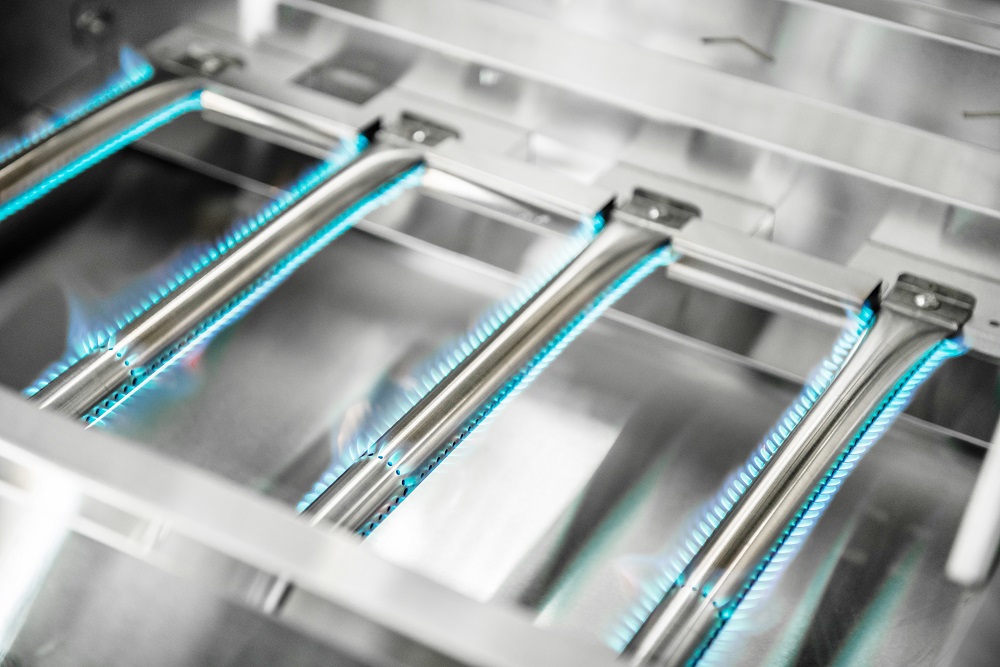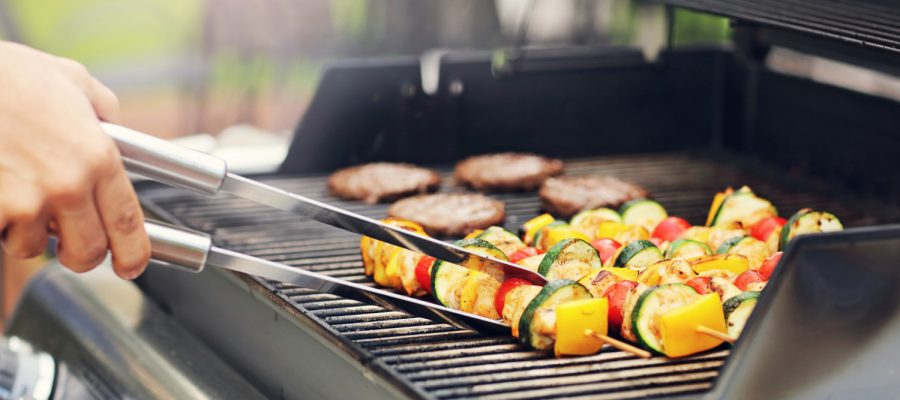Introduction
A busy restaurant patio or an event caterer’s trailer has one clear need — steady heat that never keeps customers waiting. Modern gas grills meet that need with burners that light fast, hold a steady flame, and clean up in minutes. The rise of smart control systems and tougher stainless-steel frames now lets chefs cook steaks, vegetables, and even delicate seafood on the same line without losing pace.
Modern gas grills cut prep time, trim fuel bills, and still give food the smoky bite guests expect. The latest valves and heat diffusers spread energy across the grate so every order leaves the pass hot and even. For owners, this means shorter ticket times, less gas waste, and happier diners who return.
When diners want bold grill marks and firms want lean operating costs, today’s gas units sit in the sweet spot. Old myths about “no flavor without charcoal” fade once customers taste a bone-in rib-eye kissed by a vaporizer bar. The next sections show how the grill story moved from home patios to large-scale foodservice and why the newest gear makes a clear case for a switch.
GRILLING INSPIRATION
Fast food chains once relied on flat-tops, yet open-flame gas fire has crept into quick-serve and fine-dining menus alike. Food photos on social media force kitchens to add char lines and live-fire smoke for eye appeal.
Today’s gas grill gives chefs the show of fire and the control of an oven, so they keep plates consistent during a rush. High BTU burners jump to searing heat in sixty seconds, and split-zone manifolds let cooks hold lower temps at the same time.
Heat Zones at a Glance
| Zone | Typical °F | Best for |
|---|---|---|
| High | 600-700 | Steaks, burgers |
| Mid | 400-500 | Chicken, pork chops |
| Low | 250-350 | Vegetables, seafood |
A clear zone plan helps crews roll out mixed orders without cross-flavor issues. Crews use the hot spot for hard sears, then glide items to mid for finish. The low end keeps sides warm or handles shellfish that call for gentle heat. Such a plan works only if the grill responds fast. New valves with micro-adjust needles trim flame in tiny steps, so cooks slide food, tweak a knob, and move on.
Fuel use also drops. A well-tuned three-zone system saves up to thirty percent gas versus running the full bed on high. That can cover the cost of a full stainless hood in one summer season. Clear savings drive firms to rethink older flat-tops that guzzle fuel all day.

BURNING QUESTIONS
Buyers ask if gas can match the taste of wood or lump charcoal. They wonder about safety, code rules, and long-term maintenance.
Gas grills reach the same Maillard browning that charcoal gives, while vaporizer bars return drippings as smoke for extra scent. They also run safer since they lack loose ash, and modern regulators stop flare-ups with instant shut-off features.
Flavor Without Ash: The Science
Food aroma rises when fat meets metal at about 400 °F. On charcoal, drips hit coals and burn. On gas, drips land on flavorizer bars that sit over the burner ports. The bars heat above 600 °F during service, so fat vaporizes on contact, floats, and settles back on the meat. Blind-taste tests show diners pick the gas-grilled rib-eye as often as the charcoal one because the smoke notes are close.
Safety Features Checklist
| Feature | Benefit |
|---|---|
| Thermocouple shut-off | Cuts gas if flame dies |
| Flash-tube ignition | Lights spare burner if one fails |
| Removable grease tray | Reduces flare-up risk |
| CSA/ETL certification | Meets local fire codes |
Kitchens gain peace of mind, insurers like listed units, and local inspectors clear installs faster. Training stays simple: show staff the shut-off, the tray clean-out, and pass every check.
Black.jpg)
BEHIND THE GRILL
Manufacturers moved from stamped sheet metal to powder-coated frames in the 1990s. Today they bend 304 or 443 stainless, weld seams, and laser-cut control panels for tight fits.
This shift means a grill can live ten years on a windy rooftop and still slide out bolts when service comes. Thick gauge stainless resists warping, and new ceramic briquette trays keep even heat across extra-wide 48-inch beds.
Material Upgrade Timeline
| Era | Main Body Material | Common Issue | Life Expectancy |
|---|---|---|---|
| 1980-1995 | Thin sheet steel | Rust, heat warp | 3-5 years |
| 1995-2010 | Powder-coated | Paint flake, rust | 5-7 years |
| 2010-Today | 304/443 Stainless | High cost upfront | 10-15 years |
Better build means fewer downtimes. Crews swap grates, scrub trays, and fire again in under half an hour. Smart modules also appear under the hood: Wi-Fi probes, auto-lighting sequences, and data logs. A chef can review cook temps on a phone, meet HACCP records, and head off burner clogs before they hit rush hour.
TIPS & TECHNIQUES
Operators often mistake gas grills for set-and-forget gear, yet small habits raise yield and cut waste.
Warming grates five minutes longer and oiling lightly reduces sticking, while staged firing keeps heat when lids fly open during service.
Simple Habits That Pay
| Step | Time | Payoff |
|---|---|---|
| Preheat 15 min, lid down | 0 \$ | Full grate temp, even sear |
| Oil grates with brush | 1 min | Less sticking, easy clean |
| Stage burners (high-mid) | 0 \$ | Heat rush buffer, gas saving |
| Rotate food 45° at 2 min | 0 \$ | Perfect cross-hatch marks |
Cross-Utilize Space
Most units have warming racks above the main grate. Move buns or vegetables there at half time. This frees the main bed for revenue items like steak. Turn off one end burner once the rush slows; the hood traps enough heat to finish slow-cook ribs while slicing labor costs.
HISTORY OF THE BBQ GRILL
The road from dug-out fire pits to sleek patio lines covers four centuries. Early Caribbean barbacoa frames inspired settlers. Metal kettles in the 1950s, then cart-style propane grills in the 1970s, set the stage for today’s smart rigs.
Each jump solved a need: safety, control, speed. Gas was the first fuel to give precise heat on demand, key for volume cooking.
Milestones
| Year | Advance | Impact |
|---|---|---|
| 1650 | Raised wooden rack | Kept food above sparks |
| 1897 | Cast-iron hibachi | Portable, quick heat |
| 1952 | Kettle grill | Domed lid, even airflow |
| 1973 | Propane cart grill | Instant start, home patios |
| 2007 | Infrared burner | Sear in 60 s, steakhouse style |
The leap to propane carts moved grilling from weekend campouts to weeknight dinners. For business, the same change opened hotel terraces and sports bars to high-volume grilling without smoke complaints.
GAS GRILL
Straight propane fired grills ruled for decades. Natural gas hard-piped units followed in city builds. Recent lines add dual-fuel valves and quick-connect sockets.
Gas remains the top choice for any site that needs steady utility supply, fast turn, and a clear ROI on fuel.
Fuel Cost Table (per 1 MMBTU, U.S. avg.)
| Fuel | Cost | Notes |
|---|---|---|
| Propane | \$28 | Portable tank, rural use |
| Natural gas | \$12 | Piped, urban sites |
| Charcoal | \$35 | Labor heavy, ash clean-up |
Prices swing, yet natural gas stays lowest in most metro areas. Propane tanks still help food trucks hit pop-up events. Swapping regulators lets the same chassis run either source, which cuts SKU count for chains.
right-side-e1747720296861.jpg)
ADVANTAGES OF NATURAL GAS BBQs
A natural gas line removes tank swaps and lets big venues grill nonstop through a Saturday double shift.
Natural gas costs less per BTU, burns clean, and shows lower carbon output than bottled propane.
Emission Footprint Comparison
| Fuel | CO₂ kg / steak (10 oz) |
|---|---|
| Charcoal | 1.2 |
| Propane | 0.8 |
| Natural gas | 0.6 |
Lower output helps chains hit corporate sustainability goals. Staff gain safety too; no heavy tanks, no leak tests each swap. City fire codes also favor fixed lines with shut-off valves at waist height.
Making the Switch
Switch kits include new orifices and a flexible hose that locks to a quick-connect coupler. A plumber runs the line, tests pressure, and tags the shut-off. The crew then lights the grill and checks flame height. Total downtime is often under two hours, fitting between lunch and dinner.
INNOVATION AND EXPANSION
Weber, Broil King, and other brands led with flavorizer bars, then smartphone-linked thermometers. Each leap kept a focus on faster, easier service.
The modern flagship adds cloud logging, sear stations that top 1000 °F, and slide-out grease pans on rails. Staff pull pans, dump, and lock back in place during lull time.
Smart Module Snapshot
| Feature | Benefit |
|---|---|
| Wi-Fi probe hub | Remote temp watch |
| Self-clean cycle | Burn-off, no harsh scrub |
| LED knob rim | Quick burner status at night |
| Split lid | Open half, keep half hot |
Cost Recovery Math
A mid-range smart grill adds about \$1 200 over a basic unit. If it saves eight minutes per ticket on a fifty-seat patio, the labor value covers the premium in two months of peak season. After that, savings drop straight to profit.
CONCLUSION
Gas grills began as a home convenience. They now power stadium suites, hotel rooftops, and food trucks that feed crowds fast. Upgraded metals, tighter valves, and data-ready sensors turn open flame into a controlled tool that matches the pace of modern service. Whether the line hooks to a natural gas stub or snaps onto a propane tank at a festival, today’s grill lights quick, cooks even, and cleans up before the last guest pays the check. For any business that needs flavor on schedule, the move from flame to fame is waiting at the turn of a knob.

